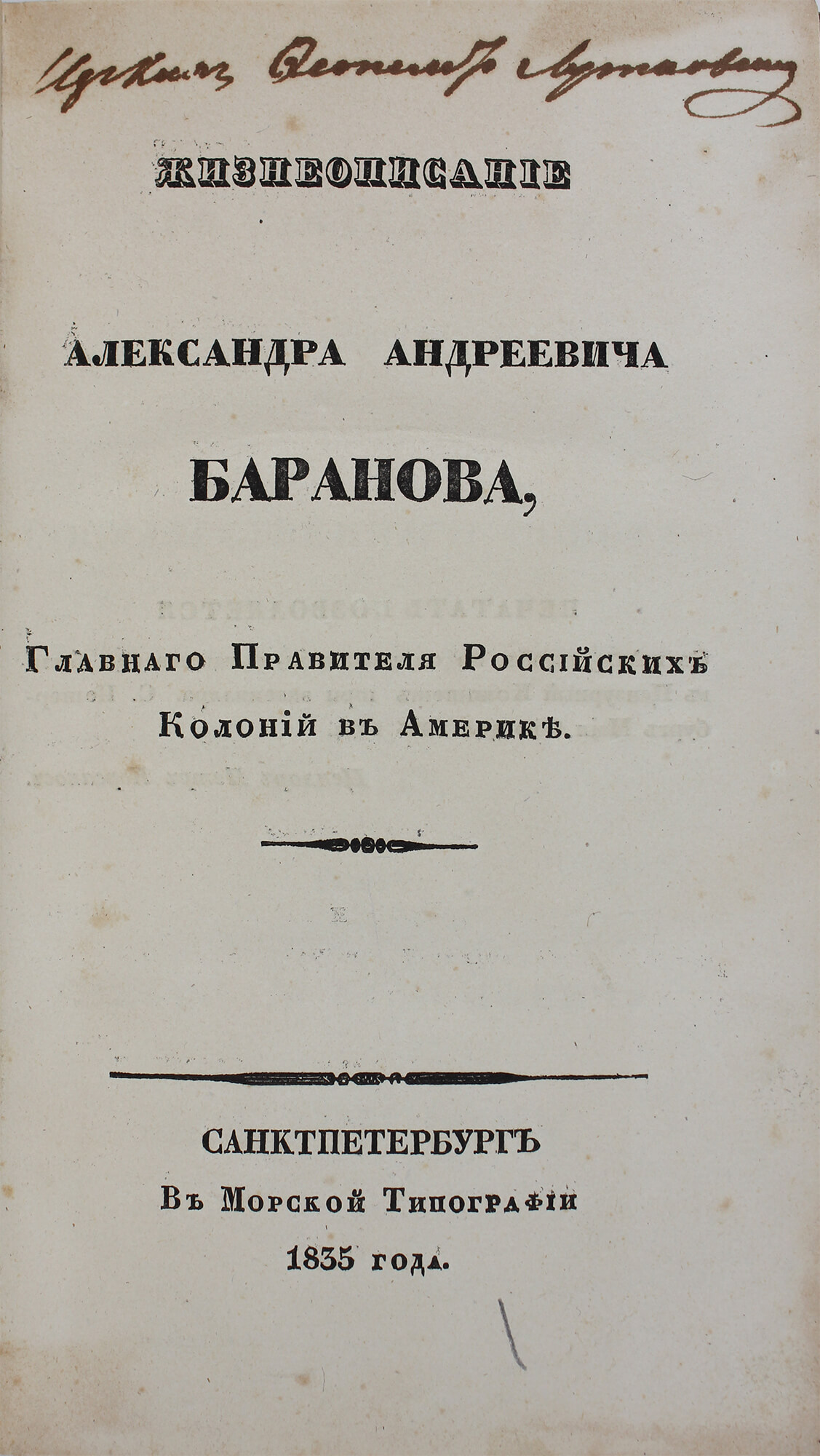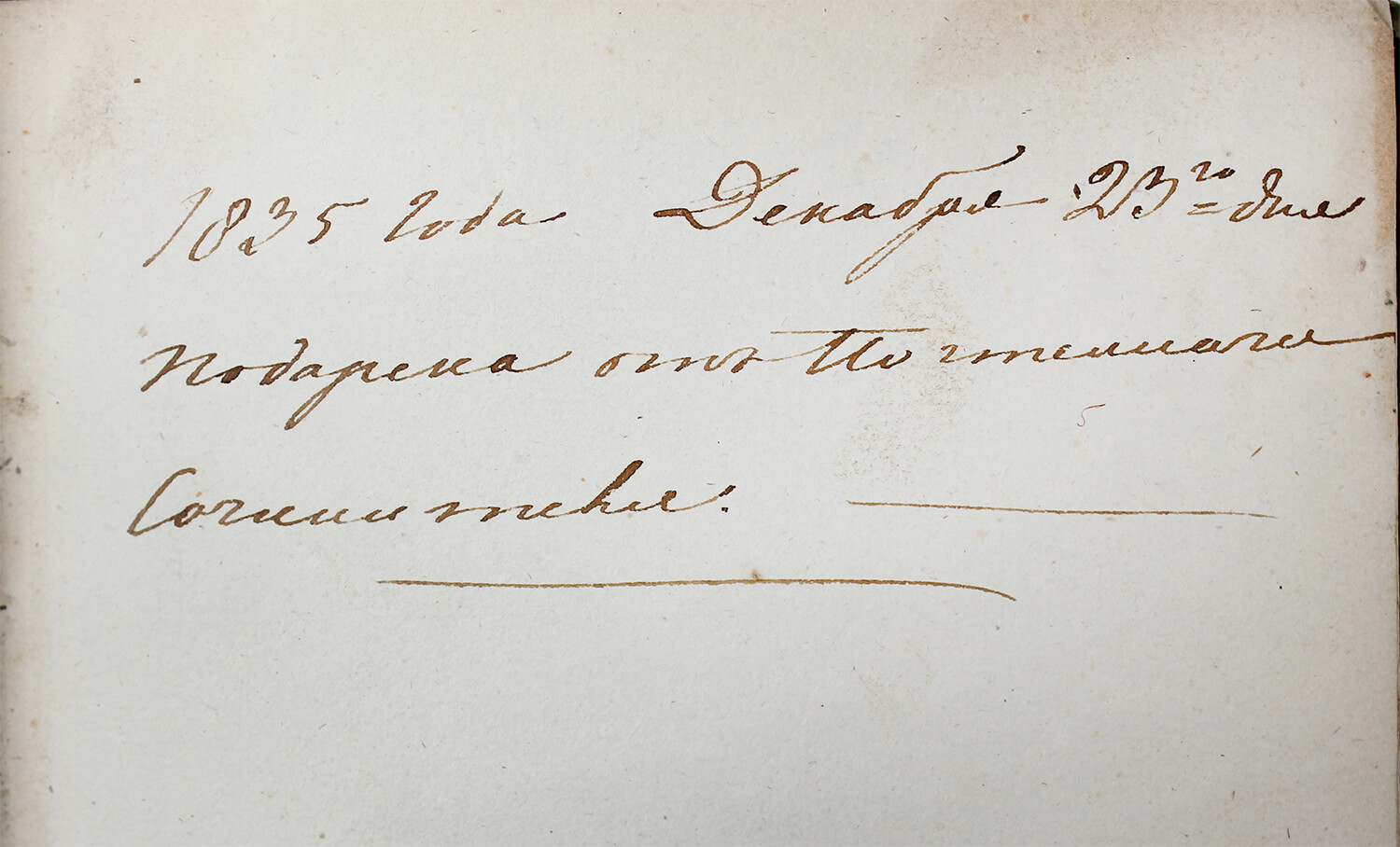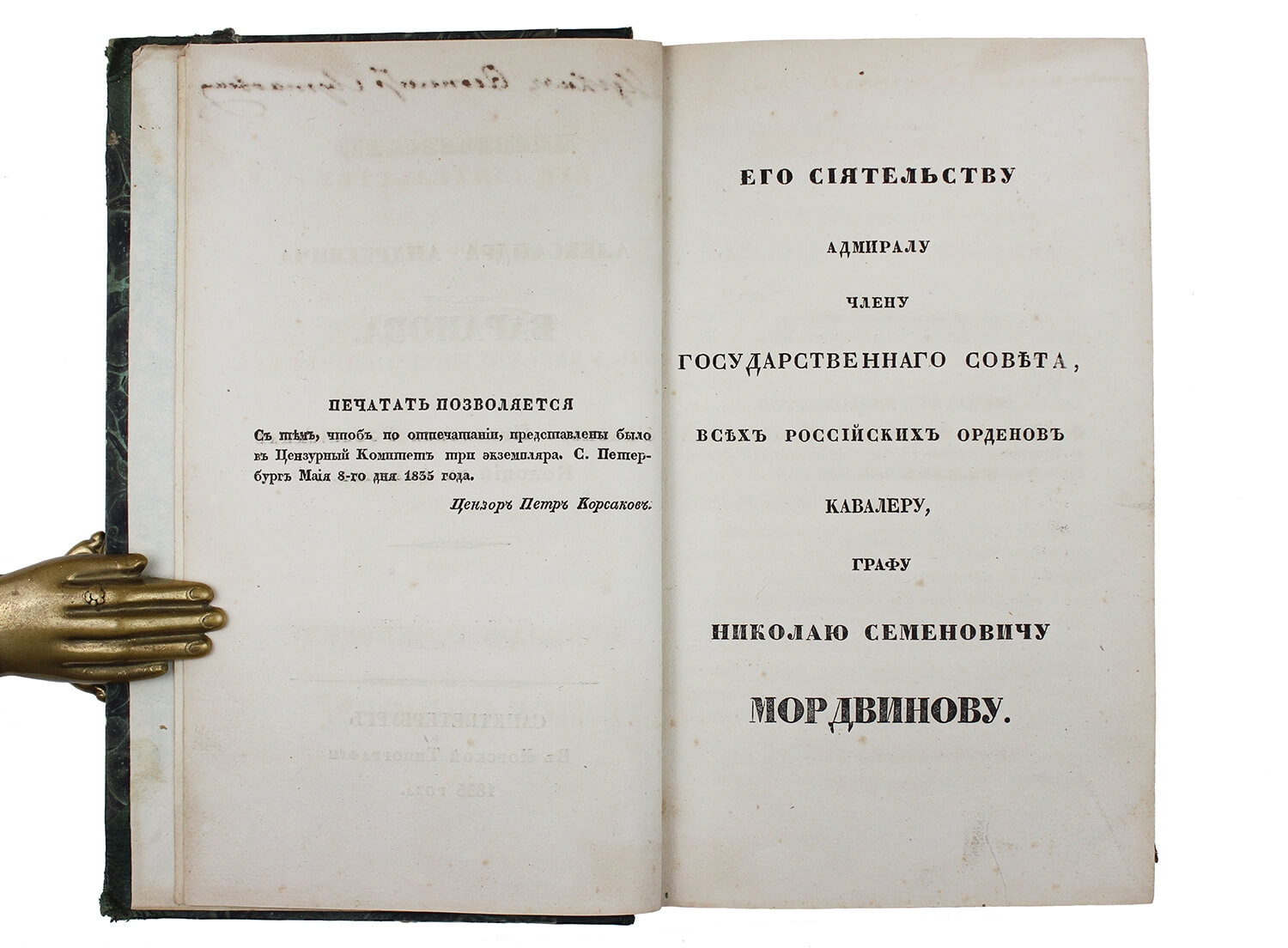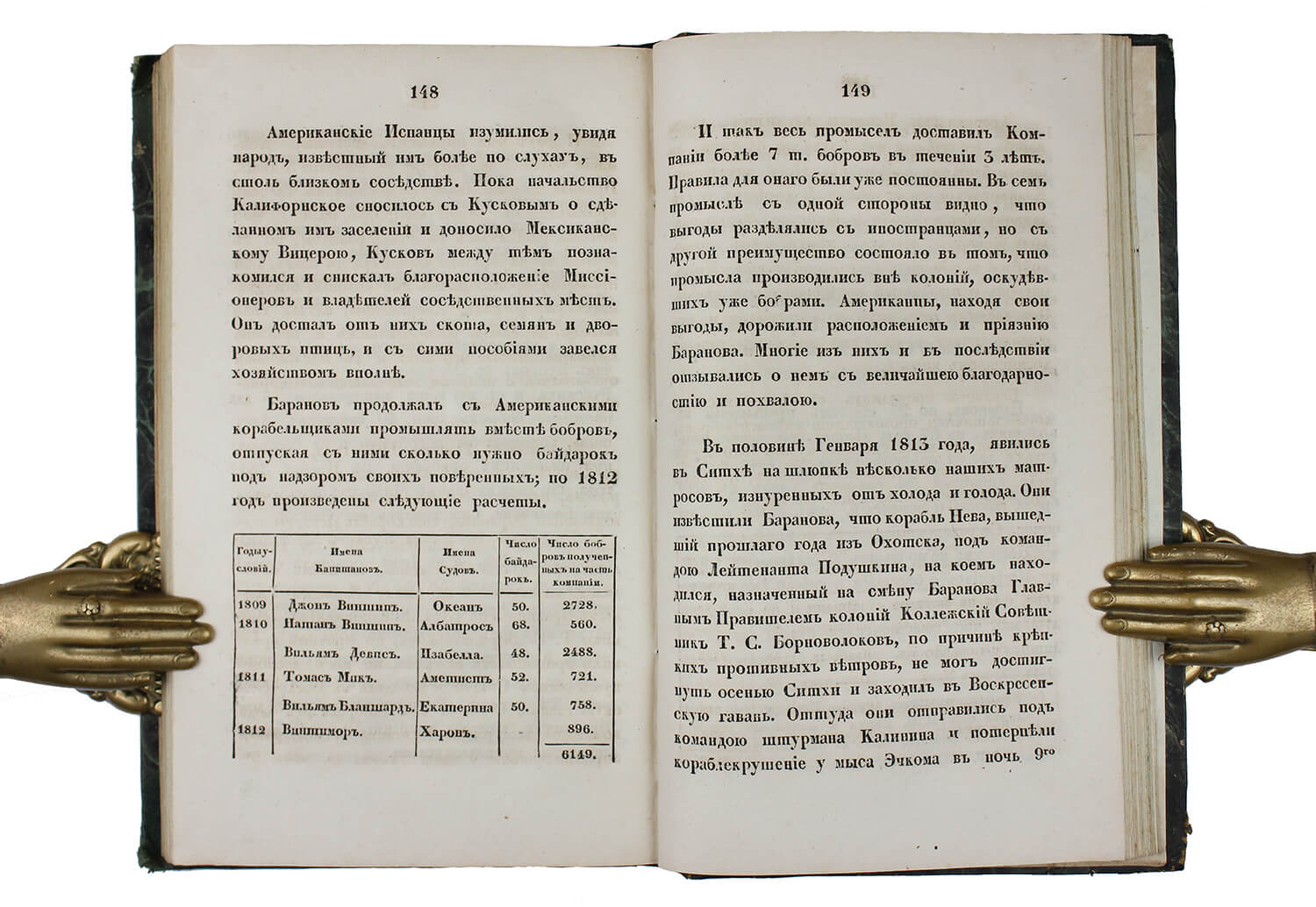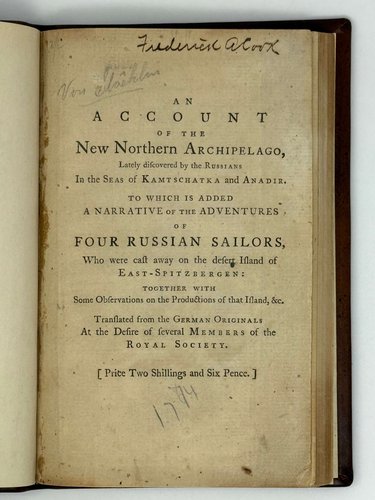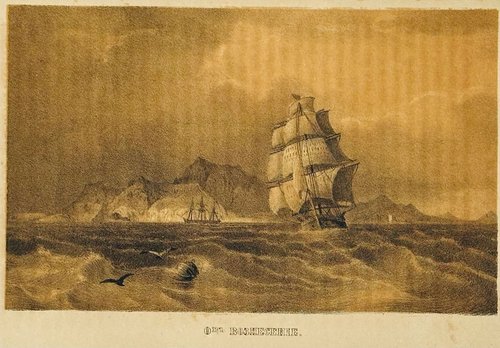
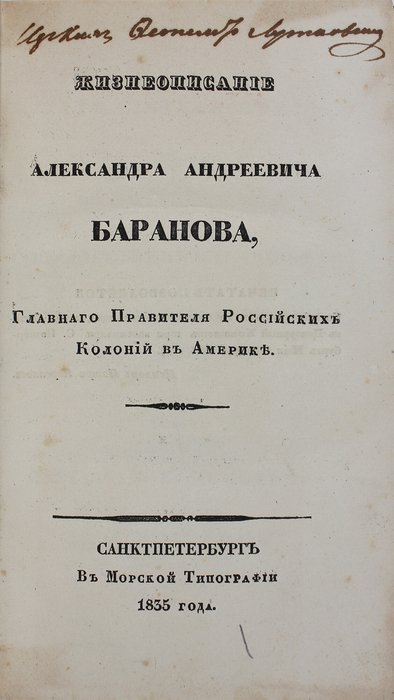



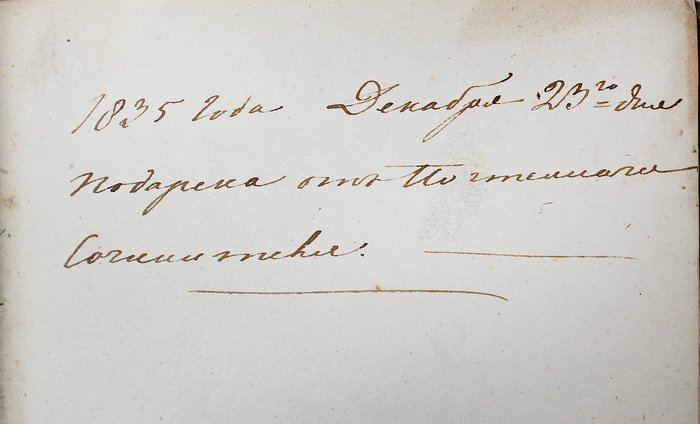
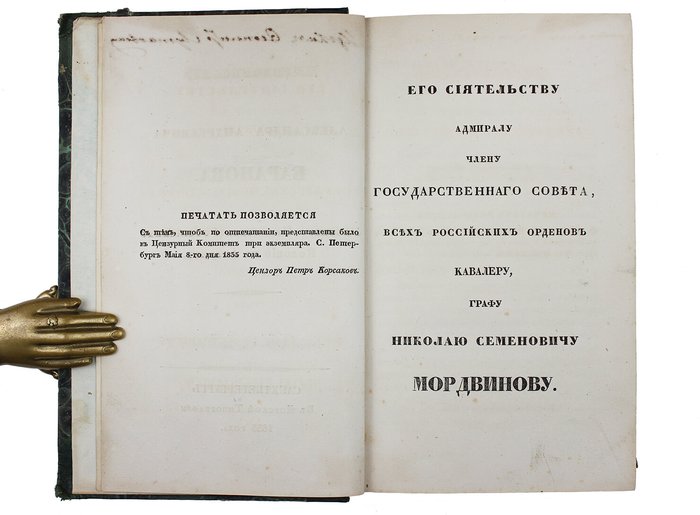
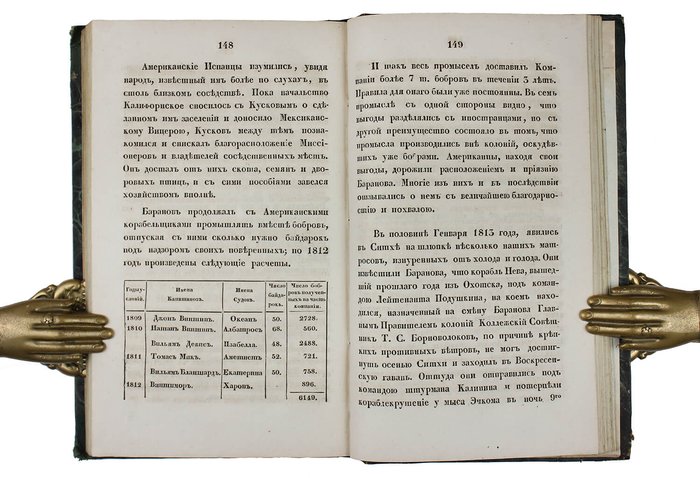
#RA9
1835
Octavo. [2], [2], [4], [4], 209 pp.
First and only Russian edition. Period brown ink note on the front free endpaper: “Presented by a venerable author, on the 23rd day of December 1835.” Period brown ink note on the title page: “From the books of Feopempt Lutkosvky.” Period Russian quarter sheep with marbled papered boards; spine with a gilt-lettered title and gilt-tooled decorative vignettes. Soviet bookshop’s stamps and notes on the rear pastedown endpaper. Binding slightly rubbed on extremities, but overall a very good original copy of this rare book.
Very rare early Russian source on the history of the Russian American Company and its activities in Alaska, California, and Hawaii. Lada-Mocarski 99. Not in Forbes. Only nine paper copies were found in Worldcat (Alaska State Library, British Library, Columbia University, Harvard University, New York Public Library, Stanford University, University of Alaska Fairbanks, University of California LA, and the University of Washington). The book was never republished in Russian; the first English translation was issued only in 1973 (Khlebnikov, K.T. Baranov, Chief Manager of the Russian Colonies in America. Kingston, Ont.: Limestone Press, 1973).
Our copy belonged to a noted Russian naval officer and circumnavigator Feopempt Stepanovich Lutkovsky (1803-1852). A graduate of the Naval Cadet Corps in Saint Petersburg, he took part in Vasily Golovnin’s second circumnavigation on the sloop “Kamchatka” (1817-1819). Lutkovsky was also Golovnin’s relative (a younger brother of his wife, Yevdokya Lutkovskaya, 1795-1884). In 1821-24, Lutkovsky took part in the voyage of the sloop “Apollon” to Russian America. After the Decembrist rebellion of 1825, he was transferred to the Russian Navy in the Black Sea and distinguished himself during the Russo-Turkish War (1828-29). In the 1830s, Lutkovsky returned to St. Petersburg and served as a teacher of Grand Duke Konstantin Nikolayevich (1827-1892), future head of the Russian Imperial Naval Ministry. Lutkovsky was a member of the Russian Geographical Society since its formation in 1845. He was evidently acquainted with Khlebnikov, whom he most likely met in Sitka during both of his visits there. As follows from the manuscript note on the front free endpaper, most likely made by Lutkovsky, the book was presented to him “by the venerable author.”
The book is the first biography of the legendary Alexander Baranov, the first Chief Manager of the Russian American Company and the first governor of Russian America (in office: 1799-1818). The book’s author, Kirill Khlebnikov, worked for the RAC since 1801 and was the Company’s administrator in Sitka headquarters in 1818-1832. He was personally acquainted with Baranov and, after the latter’s death, got access to all his official and personal documentation. Khlebnikov’s biography of Baranov is one of the earliest Russian books specially dedicated to the affairs of the Russian American Company since the accounts of all previously executed Russian voyages (Shelikhov’s, Krusenstern’s, Lisiansky’s, Kotsebue’s, Shemelin’s, etc.), as well as Berkh’s “Chronological History of Discovery of the Aleutian Islands” talked about RAC only in the context of their main topics. The biography follows Baranov from his early days in Irkutsk to his joining Grigory Shelikhov’s fur trading enterprise in the Aleutian Islands in 1790, establishing the Russian Fort on the Sitka (Baranov) Island, becoming the Chief Manager of the new Russian American Company in 1799 and ruling it for almost 20 years. Among the major events in Baranov’s life, the biography vividly describes the war with Tlingits in 1802-1805, the Battle of Sitka and the fall of the Yakutat Fort, visits by the expeditions of Lisiansky, Golovnin and Kotzebue, the establishment of the Russian Orthodox Mission in Alaska, the foundation of Company’s settlement in Fort Ross, California, etc. Very interesting are Khlebnikov’s notes about the Spanish inhabitants of California (p. 148), relations with the fur trading vessels of John Astor (pp. 135-141, 153-155), and short biographies of the RAC associates: navigator Bocharov (p. 5), Kodiak colony administrator Delarov (p. 14), the founder of Fort Ross Kuskov (p. 35), Banner (p. 66), and navigator Benzemann (p. 124), Kokh (p. 145).
This book also contains a mine of information about the beginning of Russian-Hawaiian relations – trade and diplomatic ones, including one of the earliest descriptions of the so-called “Schaeffer Affair” – the attempt of the Russian-American Company to establish a Russian colony on Kauai Island in 1815-17. The only earlier sources about the “Schaeffer Affair,” to our knowledge, are Otto von Kotzebue’s account of his first circumnavigation in 1815-1818 and Vasily Golovnin’s account of his circumnavigation on sloop Kamchatka in 1817-1819. Khlebnikov’s description of the “Schaeffer Affair” gives a different perspective to the events: it is written from the position of the Russian American Company, includes some previously unknown inside details and vividly characterizes Alexander Baranov’s feelings and reactions to the events in Hawaii.
The description occupies most part of chapter IX (pp. 157-169), covering the wreck of the Company’s ship near the Atuvai (Kauai) Island in 1814 and the capture of all its cargo. According to the narration, the ship’s captain Bennett left for Sitka on an American vessel, but six Russian crew members stayed on the islands, “being supplied food by order of the King, but having worn off their clothes; they had to stay [half-naked] like islanders” (p. 158). Khlebnikov also talks about the arrival of Dr. Schaeffer to Sitka in 1814, about Baranov’s idea to send him to the Sandwich Islands and try to establish continuous trade to get local goods cheaper than when buying them from American ships (rum, tobacco, taro root, pork, salt, fresh fruits, fishing nets from coconut fibre, etc.). Then follows a detailed description of Schaeffer’s enterprise on Kauai Island, his failure and Baranov’s misery and shame on this loss.
The book also testifies that the first associates of the Russian American Company arrived in Hawaii as early as 1806, describes Sitka-Hawaii trade operations, names the vessels involved, mentions notable wrecks related to the trade and even remarks that Baranov considered Hawaii as a place for his retirement, where he still kept ownership of the lands presented to him by Kamehameha I.
Overall a very important early rare source on the history of the Russian American Company and its relations with the native Alaskans and Hawaiian islanders in the 1800s-1820s.
“Khlebnikov’s work is an important and well-documented account of Baranov’s life – and by the same token of the first 30 years of Russian presence in Alaska. The author was in service of the R.-A. Co. in St. Petersburg from the early years of the 19th century. In 1816 he was sent as the Company’s “Commissioner” to the Russian colonies in America. Between then and Baranov’s dismissal in 1818, Khlebnikov was in constant communication with Baranov, for whom he conceived admiration and respect. It was he who took over from Baranov all the books and assets of the Company. The biography herein described covers in detail Baranov’s background, his business before he joined Shelekhov in 1790, his activities in Alaska during Shelekhov’s life, his subsequent activities for Irkutsk Company which merged with Shelekhov’s business and, finally, his 18 years’ service with the R.-A. Co. Khlebnikov’s biography is undoubtedly accurate, as he had access to Baranov’s letters and reports to his superiors, as well as to copies of communications with his collaborators in Alaska. It is probably not quite impartial in view of his admiration for Baranov” (Lada-Mocarski 99).
Howes K 118 (author’s name misspelled), Wickersham 5711, Bancroft p. 515 footnote 7.

